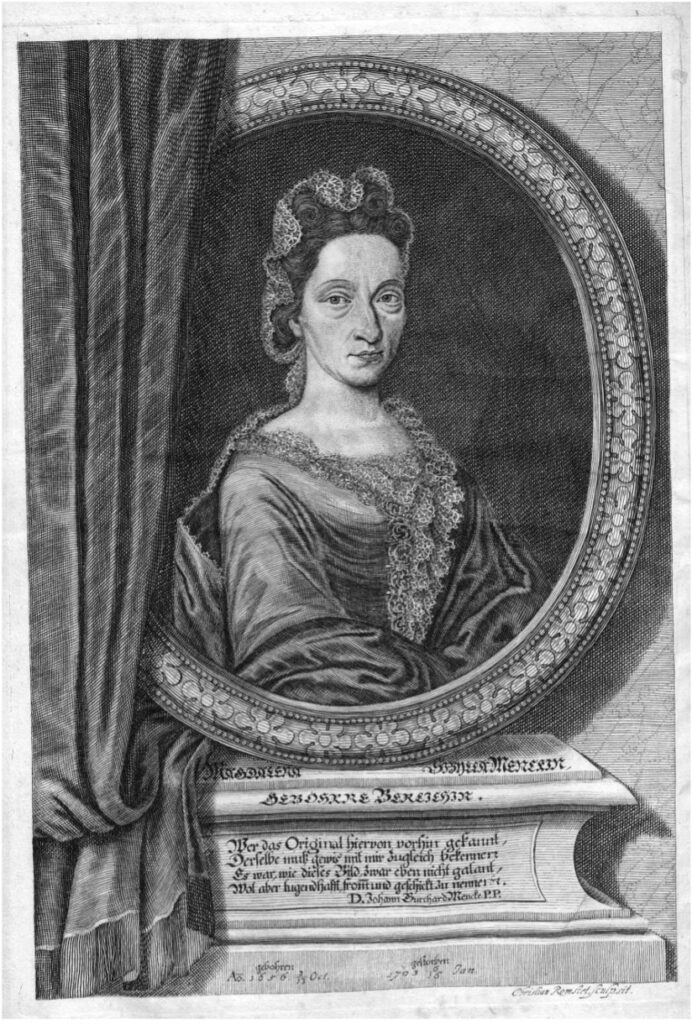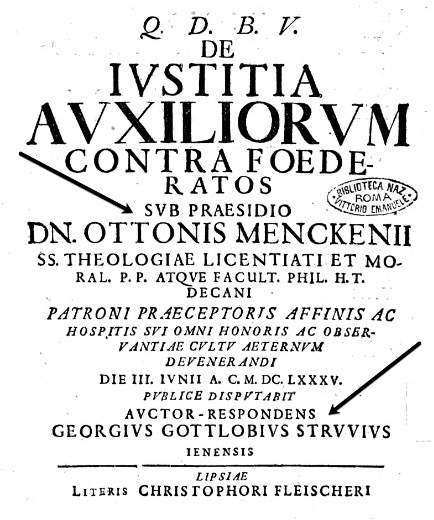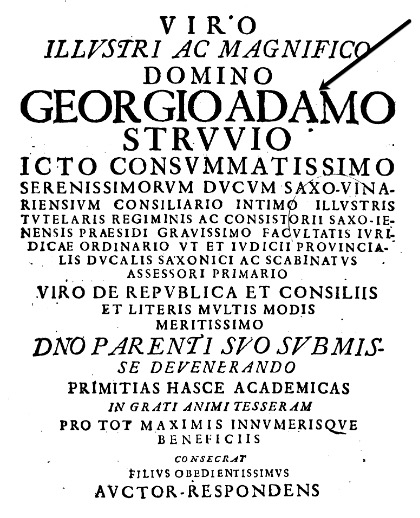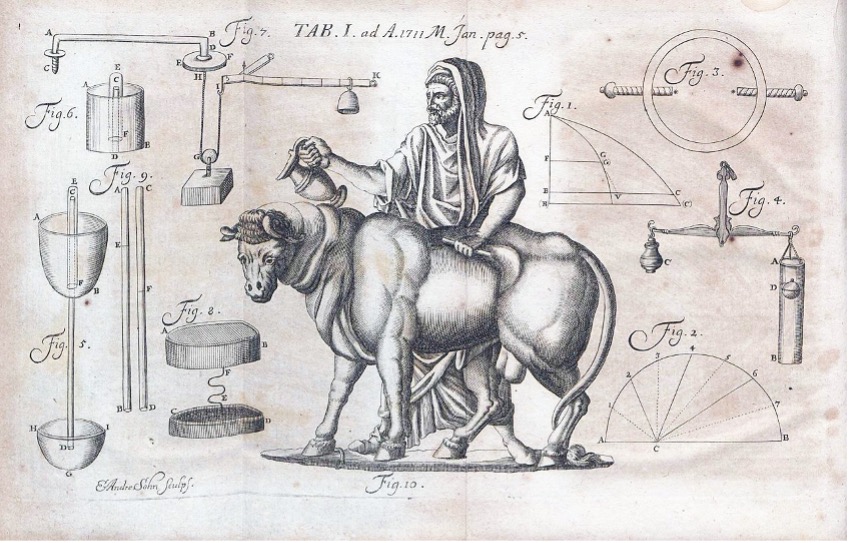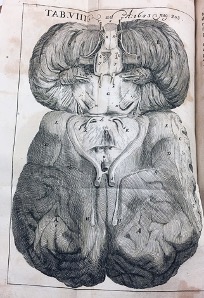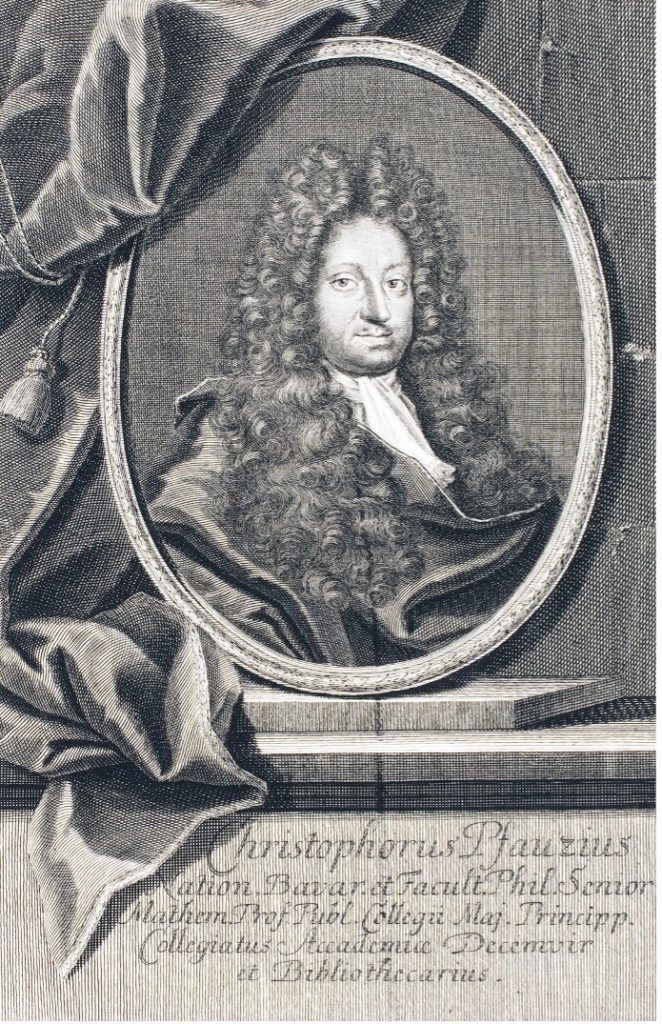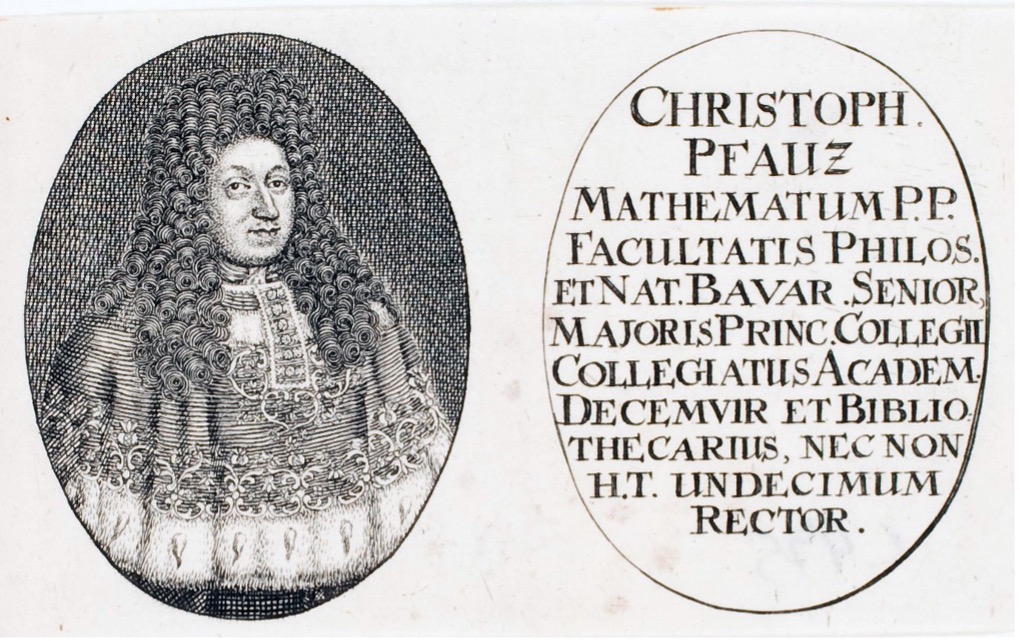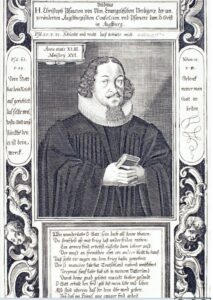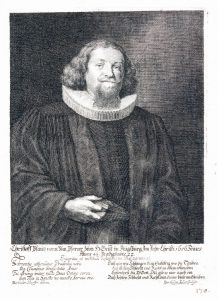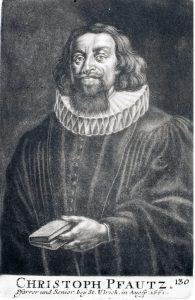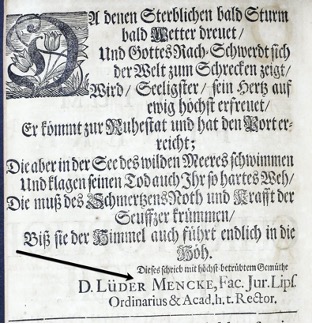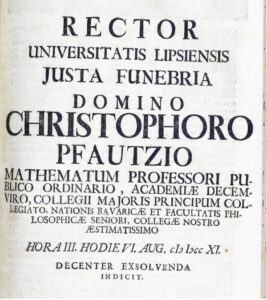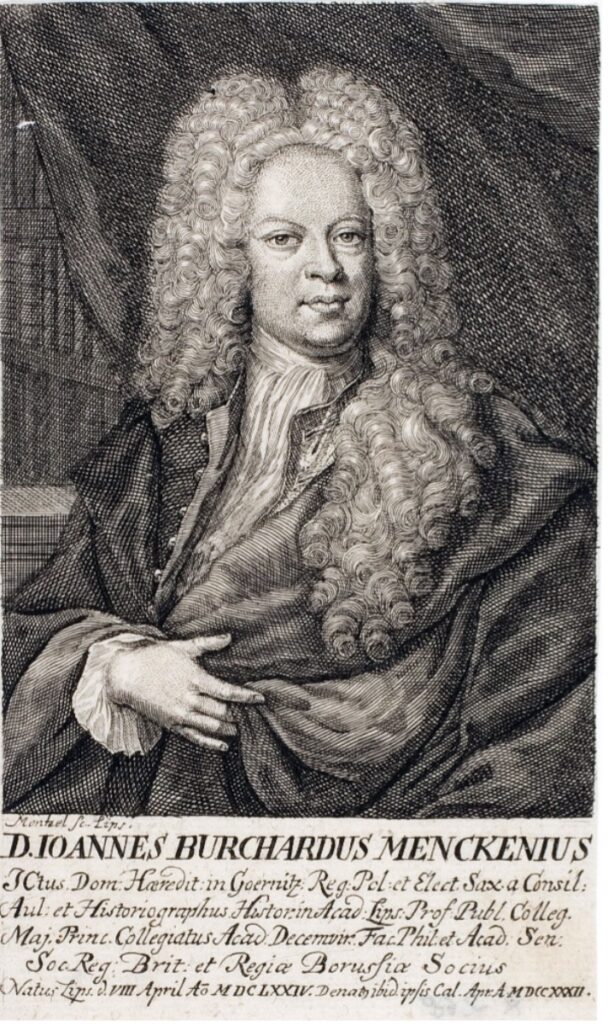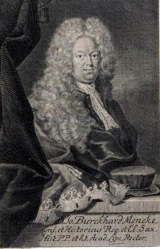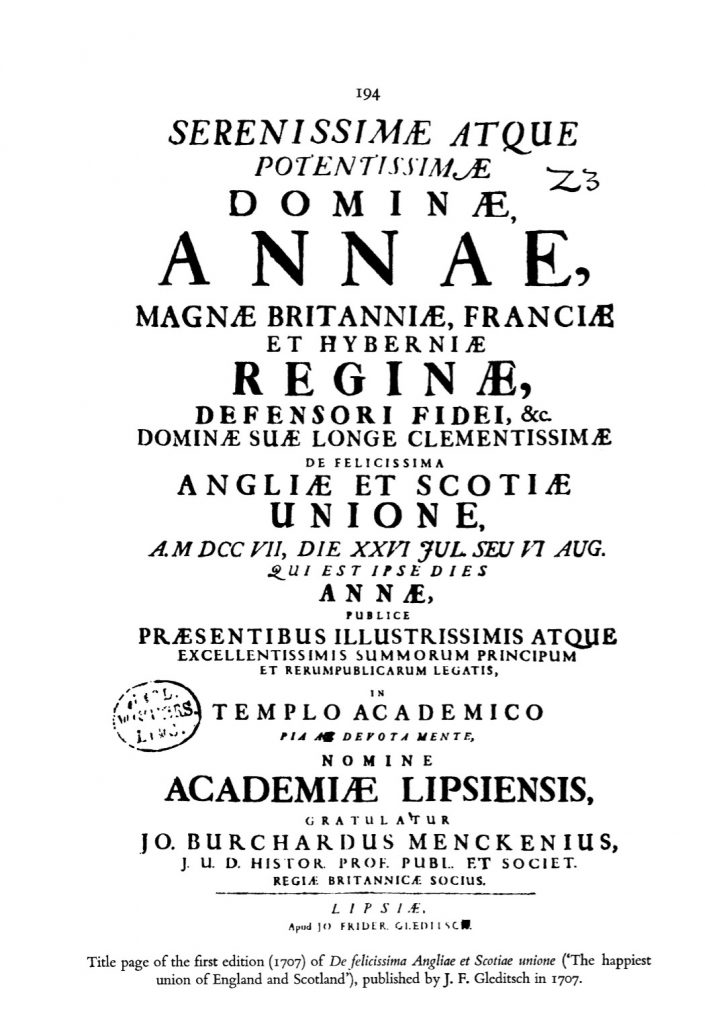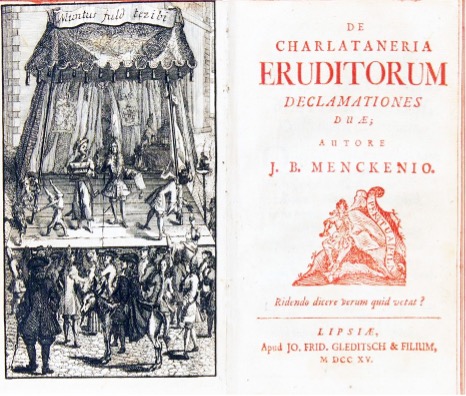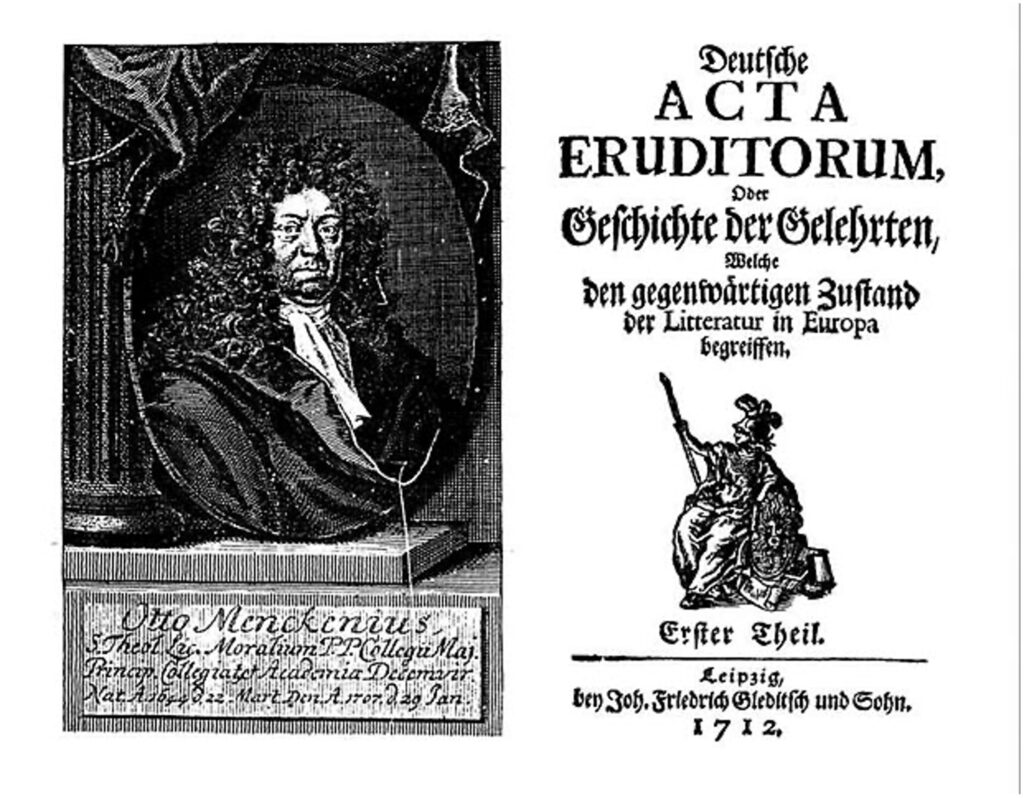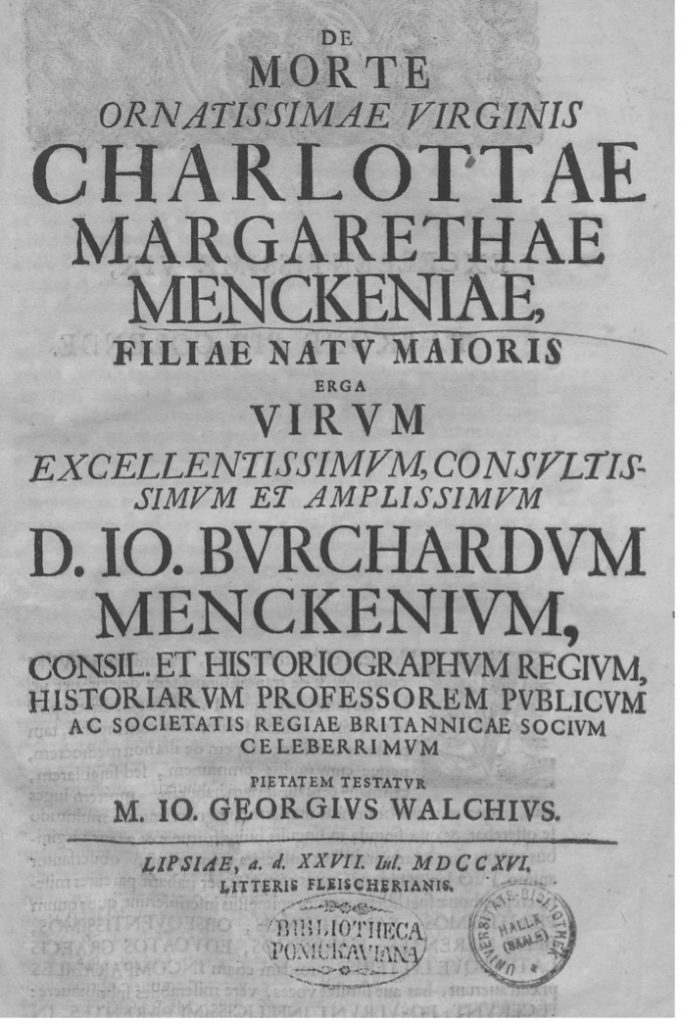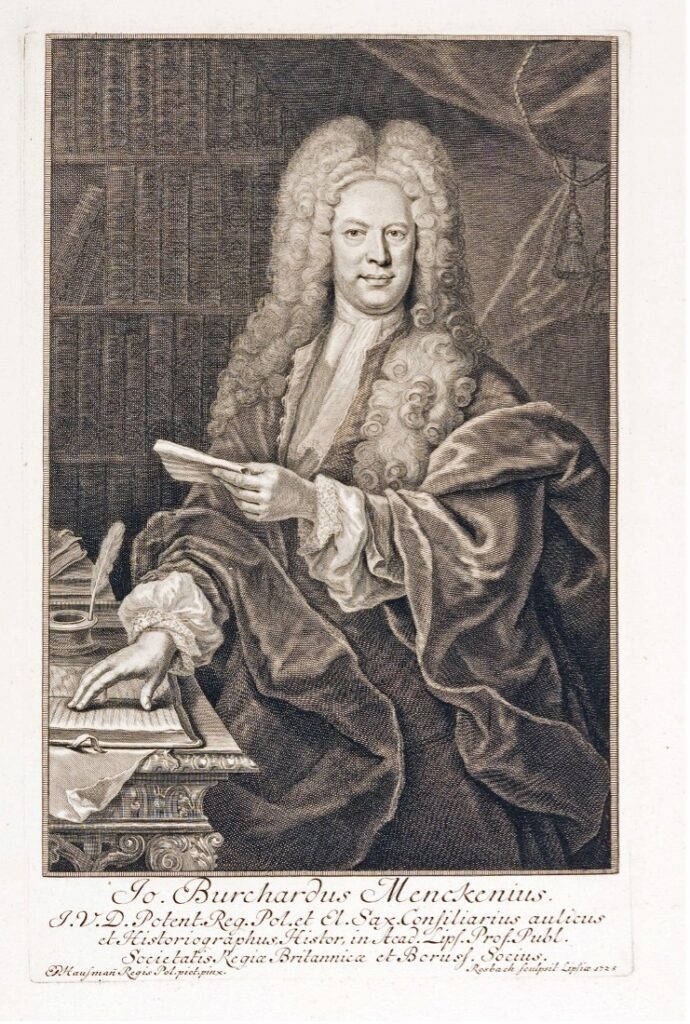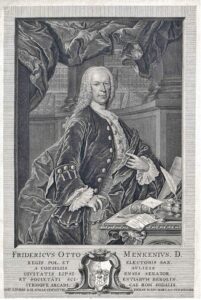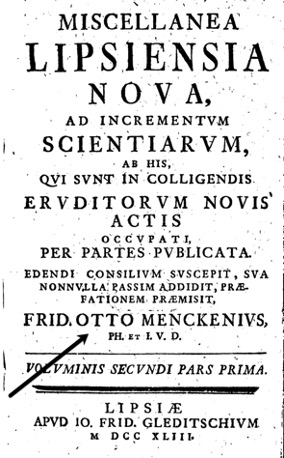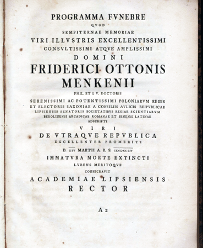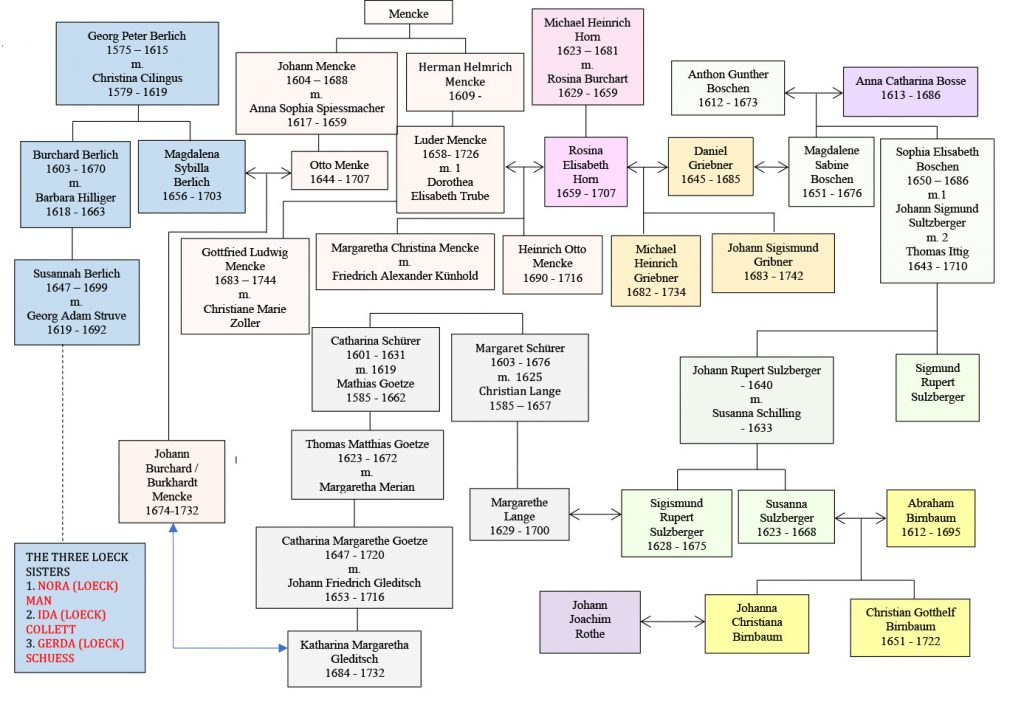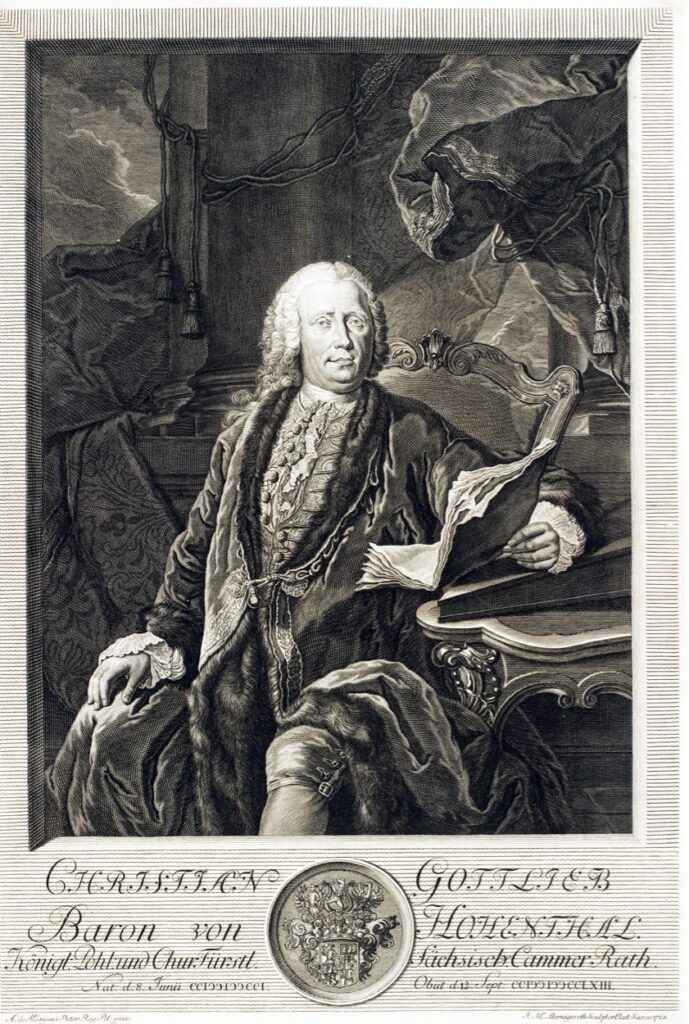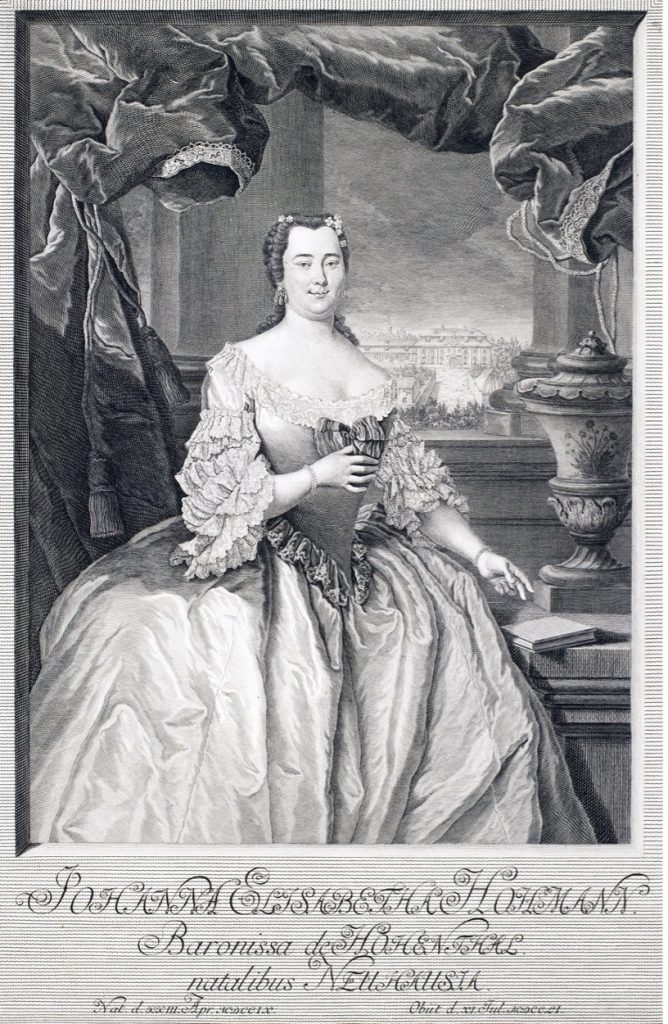MAGDALENA SYBILLA / SIBYLLE BERLICH (1656 – 1703), was the daughter of Burchard and Barbara (Hilliger) Berlich and the sister of the Three Loeck Sisters Nth great grandmother Susanna (Struve) Berlich. On 24th September 1672, she married Otto Mencke (1644 – 1707). They had two sons and a daughter. Their eldest son – Johann Burchard Mencke – married Katharina Margarita Gleditsch, the daughter Johann Friedrich Gleditsch. Their daughter Anna Sophia Mencke married Johann Christoph Wichmannshausen. The youngest son was Friedrich Otto Mencke. Otto Mencke had a cousin Luder, for whom a separate page can be found HERE.
When Magdalena Sibylla died in January 1703, a funeral book was published titled: Bey dem Grabe Der Hoch-Edlen Hoch- Ehr- und Tugendbelobten Frauen … Magdalenen Sibyllen gebohrner Berlichin … from which we learn that she was buried on 19th January 1703.
Another funeral sermon book to mark Magdalena’s passing was issued titled: Spiegel der Frömmigkeit Aus den Worten Davids Ps. LXXXIV, 11. 12. 13. Bey Volckreichem Leich-Begängniß Der Wohl-Edlen …
Among the many books produced by Otto Mencke was one which also involved Georg Adam Struve and his son Georg Gottlob Struve: De iustitia auxiliorum contra foederatos sub praesidio Dn. Ottonis Menckenii SS. theologiae licentiati … die 3. Iunii A.C. 1685. publice disputabit auctor-respondens Georgius Gottlobius Struvius Ienensis.
Otto Mencke founded and edited one of the earliest academic journals: Acta Eruditorum. During the Scientific Revolution, the development of scholarly journals was a major innovation in sharing early scientific discoveries, and they remain a significant outlet for the communication of ideas today. Below illustrations from Acta Eruditorum:
Otto Mencke first published Acta Eruditorum as a monthly journal in 1682 in Leipzig Germany, basing it on the Royal Society of London’s Philosophical Transactions and the French Journal des Sçavans, both founded in 1665. All articles in AE were written in or translated into Latin to appeal to the broader European scientific community. The journal primarily published announcements, book reviews, and abstracts from new works. It also included short essays of original works mainly on the natural sciences & medicine, philosophy and mathematics. Some famous names who published in the periodical include Boyle, Leeuwenhoek, Leibniz, and Bernoulli among others.
Otto Mencke’s sister, Catharina Mencke (1657 – 1703), married the Leipzig University academic Christoph Pfauz / Pfautz (1645 – 1711).
The father of Christoph Pfautz was Christoph Pfautz (1607-1678) (shown below), a theologian and preacher:
On the death of Christoph Pfautz (jnr.) several funeral books were published such as Luctum In Funere Viri Præ-Nobilissimi Atque Excellentissimi, Domini Christophori Pfauzii, Mathem. P.P. … Die VI. Augusti MDCCXI. Elati … including one with a contribution by Otto’s cousin Luder Mencke (center).
JOHANN BURCHARD MENCKE
As noted above, Johann Burchard’s parents were Otto Mencke and the Three Loeck Sisters Nth great aunt Magdalena Berlich. JBM was born on 8 April 1674 at Leipzig. He married Katharina Margarita Gleditch and they had a number of children including a daughter Anna Sophia who married Johann Christoph Wichmannshausen and Christine Sibylle Mencke who married Peter von Hohenthal. Their younger son was Friedrich Otto Mencke.
One of the main aims of his father (Otto) was to educate him to become his successor as editor-in-chief of the Acta Eurditorum published by Gleditsch, but JBM became much more than an editor.
When still a young lad it became evident that he was exceptionally gifted. On 14th May 1691 he graduated from Leipzig University with BA and in 1694 MA and in September 1696 he was appointed a lecturer at Leipzig.
Like many with his background he undertook a tour of Europe starting in Holland and progressing to England where he remained for a year. There he studied in the great English libraries and it gradually dawned on him that he was not cut out to become a divine but rather an historian.
He became close friends with some of the leading English historians of the time such as Richard Bentley, John Mill, John Covell, Henry Dowel, William Cave, etc. JBM had great personal charm such that William Cave treated him as his own son and left JBM his coin collection when he died. In 1700 at the age of 26 JBM was proposed for and became a Fellow of the Royal Society (FRS).
On his return to Leipzig, he was appointed professor of history. In 1708 he became official histographer to the Royal Polish and Electoral Saxonian Court and King’s Counsel. Six times he was elected the chancellor of Leipzig University. His most famous lecture was on the union of Scotland and England under Queen Anne which was published by his father-in-law Gleditsch in 1707 and is shown below (left).
Mencke is quoted as saying that: “I can only regard it as a compliment when others say that I try to praise the British and the glory of their Queen [Anne] in every possible way. All people, who know me even slightly, know what a great pleasure it gives me to speak of the English, who have been so extremely kind to me when I lived in their country …”
On the death of his father in January 1707 Mencke assumed the editorship of the Acta Eruditorium which continued until his death in 1732.
In 1716 when Johann Burchard’s daughter, Charlotte Margarethe died, her “grieving father” published a short funeral book: De Morte Ornatissimae Virginis Charlottae Magarethae Menckeniae, Filiae Natv Maioris Erga Virvm Excellentissimvm …
It gave JBM great satisfaction knowing that the journal celebrated its 50th anniversary under his direction. He died on 1st April 1732.
Friedrich Otto Mencke
Johann Burchard and Katharina Margarita (Gleditch) Mencke had one son Friedrich Otto Mencke [FOM] (1708-1754) who, unsurprisingly, was also an academic. On 15th February 1725 Friedrich was awarded his master’s in philosophy from Leipzig after which he turned to the law. To this end, he moved to the University of Wittenberg, where he graduated with a law degree on 22nd March 1732. He returned to Leipzig and there completed his Doctor of Law on 18th September 1733. He took over editing Acta Eruditorum after his father’s death in 1732. No children.
Four works by and about Friedrich Otto Mencke:
Friedrich Otto married Johanna Catharina Langguth and they had a daughter, Christina Sophia, who married Johann Carl Gehler (17 May 1732 – 6 May 1796).

(17 May 1732 – 6 May 1796)
Gehler studied medicine from 1751 to 1758 at the University of Leipzig. While a student at Leipzig, he furthered his interest in natural sciences, publishing the mineralogical treatise, De characteribus fossilium externis (1757). Following graduation, he continued his education by studying mineralogy in Freiberg and obstetrics in Strasbourg as a student of Johann Jakob Fried (1689–1769).[1] After his return to Leipzig, he served as a lecturer in mineralogy, and in the meantime, maintained a successful medical practice, of which, he specialized in midwifery. In 1763 he was named an associate professor of botany at the university. Later on at Leipzig, he successively held professorships in physiology (1773–1781), anatomy and surgery (1781–1784), pathology (1784–1789) and therapy (1789–1796). From 1789 to 1796, he served as dean of the medical faculty.
CHRISTINE SIBYLLE MENCKE (1709 – 1750)
Johann Burchard and Katharina Margarita (Gleditsch) Mencke had a daughter Christine Sibylle Mencke who married Peter Freiherr von Hohenthal of Trossin and Wallendorf (1694 – 1763), son of Peter Hohmann (shown below).
Hohenthal is the name of a noble family of knights ennobled in 1717 with the original name Hohmann. In 1733/36 the wealthy Leipzig merchant Peter Hohmann was elevated to the nobility of Hohenthal, and his sons obtained the imperial baronial status in 1733. The family acquired numerous properties in Saxony, and its members often held high offices in the Saxon civil service. In 1790 the entire family was elevated to the status of imperial count.
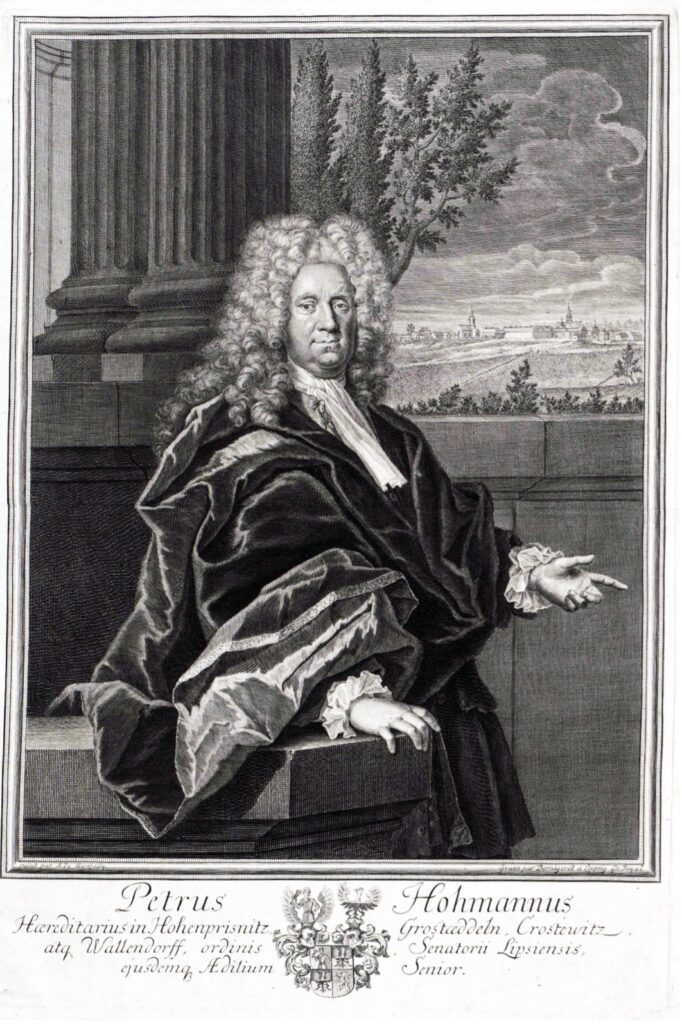
We do not have images of Peter Freiherr von Hohenthal nor his wife Christine, but we do have portraits of Peter’s brother and his wife (below).
Peter Freiherr and Christine Sibylle (Mencke) von Hohenthal had a son – Peter Freiherr von Hohenthal. born September 2, 1726 in Leipzig, † August 14, 1794 in Herrnhut. He was the district clerk of Saxony and vice president of the consistory. In 1748 he bought from Christoph Heinrich von Zaschnitz both his knighthoods of Falkenberg / Elster and Schmerkendorf in the Liebenwerda district. In addition, he acquired the knightly estate Kossa in 1765, the Knautnaundorf outpost in 1766 and the hereditary estate in Döbernitz in 1769.
He was married to Dorothea Elisabeth written as Haeseler (also: Häßle); the royal Prussian Secret Council August von Haeseler of Klosterhäseler and Gößnitz was her father.
